New Armoured Dinosaur Discovered On Isle Of Wight
Conny Waters - AncientPages.com - A new armored dinosaur, known as an ankylosaur, has been described and named for Prof Paul Barrett of the Natural History Museum.
Vectipelta barretti was discovered in the Wessex formation on the Isle of Wight and represents the first armored dinosaur from the dinosaur Isle to be described in 142 years.
Two Vectipelta barretti. Credit: Stuart Pond
Lead author Stuart Pond explained the importance of this find, "This is an important specimen because it sheds light on ankylosaur diversity within the Wessex formation and Early Cretaceous England.
"For virtually 142 years, all ankylosaur remains from the Isle of Wight have been assigned to Polacanthus foxii, a famous dinosaur from the island, now all of those finds need to be revisited because we've described this new species."
The new species differs from Polacanthus foxii, previously the only known ankylosaur from the Isle of Wight, in several key characteristics. The fossilized remains show differences in the neck and back vertebrae, a very different structure to the pelvis and more blade-like spiked armor.
The researchers used phylogenetic analysis to work out the relationships between different ankylosaurs and discovered that they are not actually very closely related. In fact, Vectipelta was found to be most closely related to some Chinese ankylosaurs, suggesting dinosaurs moved freely from Asia to Europe in the Early Cretaceous.
Vectipelta barretti would have been roaming the earth during the Early Cretaceous, a time for which fossil remains are rare worldwide. This has led some to suggest that a mass extinction occurred at the end of the Jurassic, which makes the understanding of dinosaur diversity at this time crucial to understanding if such an event occurred and how life recovered. With rocks from this time mostly absent in North America, the Wessex Formation and the Isle of Wight are hugely important areas in answering these questions.
At the time the Isle of Wight would have had a climate similar to that of the Mediterranean and was a flood plain covered by a large meandering river system. Floods would have washed organic material such as plants, logs and even dinosaur bodies together and, as waters receded, this organic matter would have been isolated in ponds on the floodplain that eventually dried out and were buried in the clay soil, preserving this organic material as the fossils we find today.
On naming the new dinosaur for Prof Paul Barrett of the Natural History Museum, senior author Dr. Susannah Maidment said, "Myself and some of the other authors on this study have been mentored or supervised by Paul for most of our careers, and it was notable to us that Paul hadn't had a dinosaur named after him yet. He's hugely influential in in vertebrate paleontology, and he's a world-leading authority on dinosaurs.
"We really wanted to thank him for his support and mentorship, so we decided to name a, slow-moving, spikey organism after him."
Prof Paul Barrett has worked at the Natural History Museum, London for 20 years and in that time has published an impressive 220 scientific papers. He has also supervised 31 Ph.D. students and mentored many others, encouraging a whole new generation of paleontologists.
Of the honor Prof Barrett said, "I'm flattered and absolutely delighted to have been recognized in this way, not least as the first paper I ever wrote was also on an armored dinosaur in the NHM collections. I'm sure that any physical resemblance is purely accidental."
The team are optimistic that more species will be discovered in the area in the future. Dr. Maidment concluded, "We have new iguanodontians that we are lining up, to be prepped and to be studied. I think we have at least two new taxa in the collections. With regards to ankylosaurs, they are somewhat rarer, so I think we need to keep our eyes peeled."
The new dinosaur is part of the internationally important collection held at Dinosaur Isle Museum, operated by the Isle of Wight Council. Parts of the dinosaur will be on display at the museum for the school holidays. The bones have been cleaned from their surrounding matrix by staff and volunteers at the museum which has made the research possible.
The paper, "Vectipelta barretti, a new ankylosaurian dinosaur from the Lower Cretaceous Wessex Formation of the Isle of Wight," is published in the Journal of Systematic Paleontology.
Written by Conny Waters - AncientPages.com Staff Writer
More From Ancient Pages
-
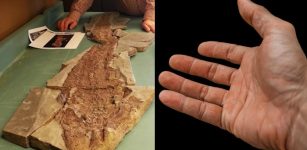 Extraordinary Fossil Evidence Human Hand Evolved From Fish Fins
Evolution | May 16, 2023
Extraordinary Fossil Evidence Human Hand Evolved From Fish Fins
Evolution | May 16, 2023 -
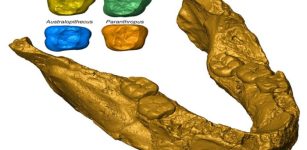 Fossil Tooth Analysis Sheds More Light On Earliest Humans From Southern Africa
Archaeology | Jul 15, 2022
Fossil Tooth Analysis Sheds More Light On Earliest Humans From Southern Africa
Archaeology | Jul 15, 2022 -
 Hollow Bones That Let Dinosaurs Become Giants Evolved At Least Three Times Independently
News | Apr 11, 2023
Hollow Bones That Let Dinosaurs Become Giants Evolved At Least Three Times Independently
News | Apr 11, 2023 -
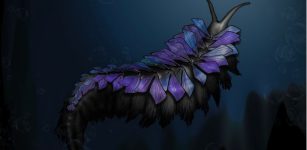 500-Million-Year-Old Sea Worm Named After ‘Dune’ Monster Was Unknown To Science Until Now
Paleontology | Aug 3, 2023
500-Million-Year-Old Sea Worm Named After ‘Dune’ Monster Was Unknown To Science Until Now
Paleontology | Aug 3, 2023 -
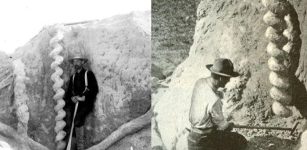 ‘Devil’s Corkscrews’: Extraordinary Giant Spirals Of Nebraska Rocky Mountains
Featured Stories | Apr 23, 2023
‘Devil’s Corkscrews’: Extraordinary Giant Spirals Of Nebraska Rocky Mountains
Featured Stories | Apr 23, 2023 -
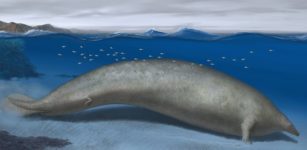 Whale That Lived 40 Million Years Ago Could Be The Heaviest Animal To Have Ever Lived
Paleontology | Aug 8, 2023
Whale That Lived 40 Million Years Ago Could Be The Heaviest Animal To Have Ever Lived
Paleontology | Aug 8, 2023 -
 First Fossils Of Ancient Human Relatives Sent To Space – Tribute To Science And Our Ancient History
Fossils | Sep 12, 2023
First Fossils Of Ancient Human Relatives Sent To Space – Tribute To Science And Our Ancient History
Fossils | Sep 12, 2023 -
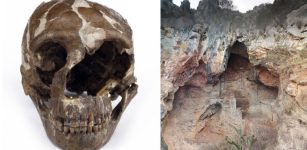 New Fossil Analysis Has Just Re-Written The Human Evolution Timeline
Evolution | Dec 21, 2023
New Fossil Analysis Has Just Re-Written The Human Evolution Timeline
Evolution | Dec 21, 2023 -
 Sobek: A 2,500-Year-Old Mummified Nile Crocodile – On Display At The British Museum
Archaeology | Dec 9, 2015
Sobek: A 2,500-Year-Old Mummified Nile Crocodile – On Display At The British Museum
Archaeology | Dec 9, 2015 -
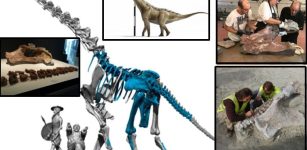 Qunkasaura: New Cretaceous Sauropod Found In Iberian Peninsula
Paleontology | Sep 6, 2024
Qunkasaura: New Cretaceous Sauropod Found In Iberian Peninsula
Paleontology | Sep 6, 2024 -
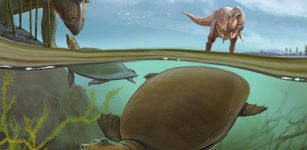 New Species Of Softshell Turtle That Lived In North Dakota 66.5 Million Years Ago With Dinosaurs Discovered
Fossils | Mar 14, 2022
New Species Of Softshell Turtle That Lived In North Dakota 66.5 Million Years Ago With Dinosaurs Discovered
Fossils | Mar 14, 2022 -
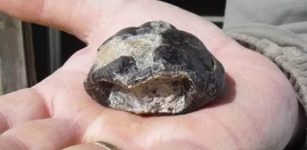 First Discovery Of A 127-Million-Year-Old Side-Necked Turtle Fossil In UK
Fossils | Jun 13, 2023
First Discovery Of A 127-Million-Year-Old Side-Necked Turtle Fossil In UK
Fossils | Jun 13, 2023 -
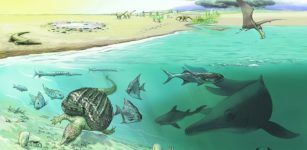 Is Huge New Ichthyosaur, One Of The Largest Animals Ever Uncovered?
Fossils | Jul 10, 2023
Is Huge New Ichthyosaur, One Of The Largest Animals Ever Uncovered?
Fossils | Jul 10, 2023 -
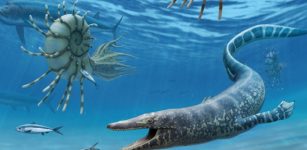 Discovery Of Ancient Marine Reptile Fossil – New Evolutionary Insight
Evolution | Jun 26, 2023
Discovery Of Ancient Marine Reptile Fossil – New Evolutionary Insight
Evolution | Jun 26, 2023 -
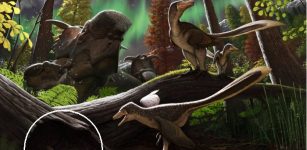 Fossil Of Tiny ‘Ice Mouse’ That Survived Arctic Cold In The Age Of Dinosaurs Discovered
Paleontology | Aug 21, 2023
Fossil Of Tiny ‘Ice Mouse’ That Survived Arctic Cold In The Age Of Dinosaurs Discovered
Paleontology | Aug 21, 2023 -
 ‘Giant’ Predator Worms More Than Half A Billion Years Old Discovered In North Greenland
Paleontology | Jan 4, 2024
‘Giant’ Predator Worms More Than Half A Billion Years Old Discovered In North Greenland
Paleontology | Jan 4, 2024 -
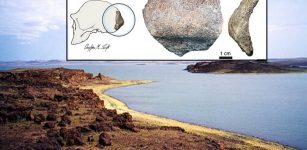 Highly Debated Early Homo Erectus Skull From Turkana – Age And Origin Now Verified
Archaeology | Apr 20, 2021
Highly Debated Early Homo Erectus Skull From Turkana – Age And Origin Now Verified
Archaeology | Apr 20, 2021 -
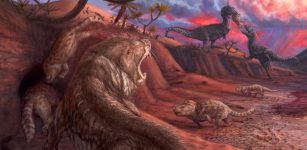 Extremely Rare Jurassic Fossils Discovered Near Lake Powell, Utah
Fossils | Oct 16, 2023
Extremely Rare Jurassic Fossils Discovered Near Lake Powell, Utah
Fossils | Oct 16, 2023 -
 Neanderthal-Denisovan Ancestors Interbred With ‘Superarchaic’ Population 700,000 Years Ago
Archaeology | Feb 24, 2020
Neanderthal-Denisovan Ancestors Interbred With ‘Superarchaic’ Population 700,000 Years Ago
Archaeology | Feb 24, 2020 -
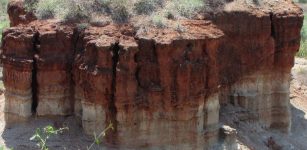 Spectacular Olduvai Gorge And Early Hominid Fossils Found In East Africa
Archaeology | Nov 26, 2016
Spectacular Olduvai Gorge And Early Hominid Fossils Found In East Africa
Archaeology | Nov 26, 2016

